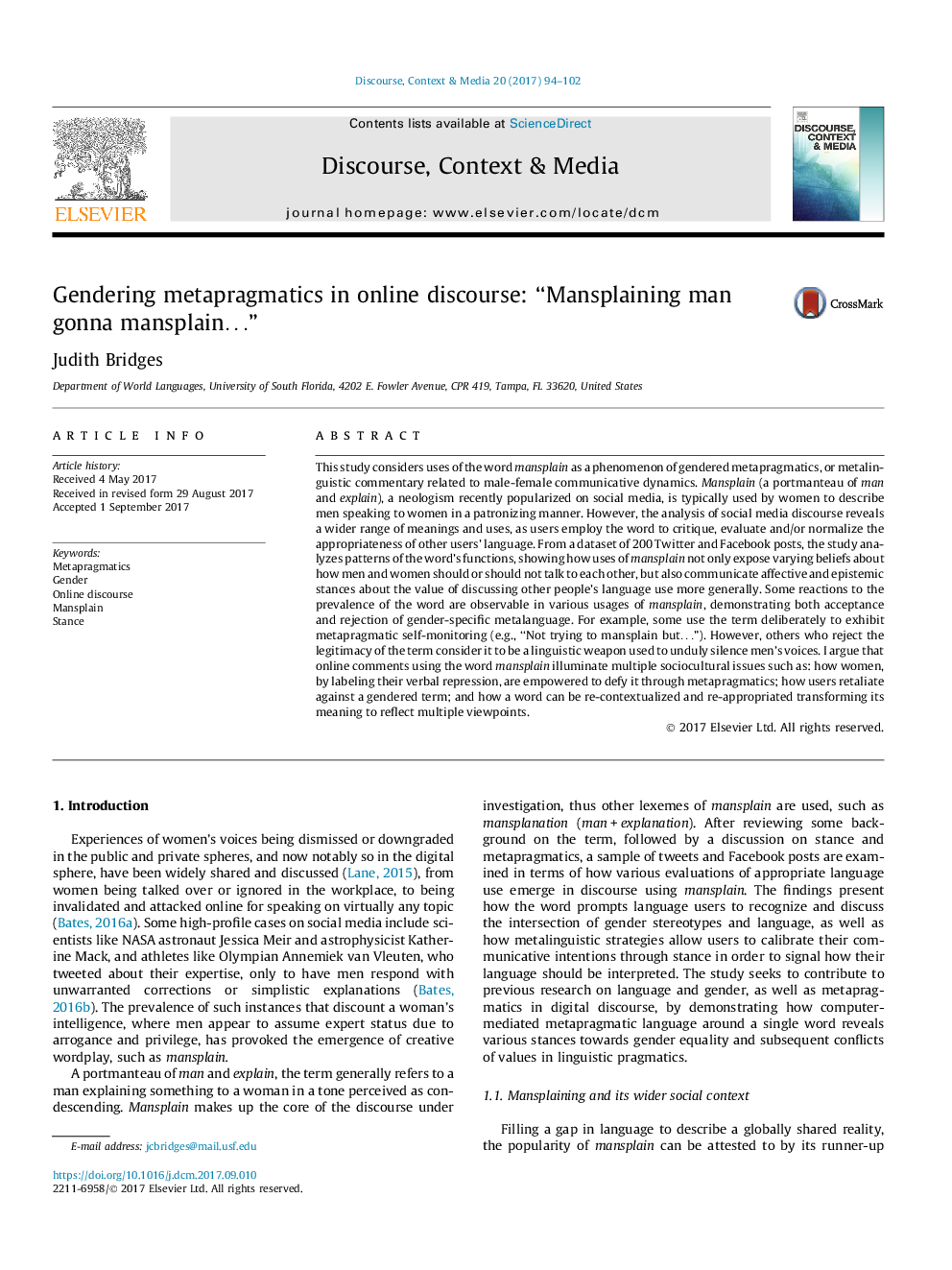| Article ID | Journal | Published Year | Pages | File Type |
|---|---|---|---|---|
| 5123971 | Discourse, Context & Media | 2017 | 9 Pages |
â¢Mansplain prompts language users to evaluate and discuss gendered norms in language.â¢Creative metapragmatic strategies express users' affective and epistemic stance.â¢Evaluations of metapragmatic lexemes result in “doubly-metapragmatic” speech.â¢Language users reappropriate and redefine mansplain to convey varying beliefs.â¢Social media discourses reveal wider values of gender and pragmatic linguistics.
This study considers uses of the word mansplain as a phenomenon of gendered metapragmatics, or metalinguistic commentary related to male-female communicative dynamics. Mansplain (a portmanteau of man and explain), a neologism recently popularized on social media, is typically used by women to describe men speaking to women in a patronizing manner. However, the analysis of social media discourse reveals a wider range of meanings and uses, as users employ the word to critique, evaluate and/or normalize the appropriateness of other users' language. From a dataset of 200 Twitter and Facebook posts, the study analyzes patterns of the word's functions, showing how uses of mansplain not only expose varying beliefs about how men and women should or should not talk to each other, but also communicate affective and epistemic stances about the value of discussing other people's language use more generally. Some reactions to the prevalence of the word are observable in various usages of mansplain, demonstrating both acceptance and rejection of gender-specific metalanguage. For example, some use the term deliberately to exhibit metapragmatic self-monitoring (e.g., “Not trying to mansplain but⦔). However, others who reject the legitimacy of the term consider it to be a linguistic weapon used to unduly silence men's voices. I argue that online comments using the word mansplain illuminate multiple sociocultural issues such as: how women, by labeling their verbal repression, are empowered to defy it through metapragmatics; how users retaliate against a gendered term; and how a word can be re-contextualized and re-appropriated transforming its meaning to reflect multiple viewpoints.
